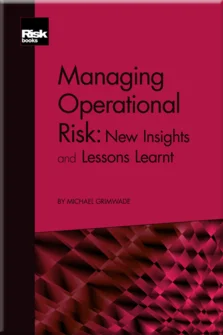Defining and Cascading Operational Risk Appetites
Introduction
Three Historical Spikes in Operational Risk Losses
First-Order Effects: Transforming Credit Defaults and Market Turmoil into Operational Risk Losses
Second-Order Effects: Transforming Rising Unemployment and Falling Interest Rates into Operational Risk Losses
Conclusions and Root Causes
Regulatory Change: Part of a Perfect Storm
Macroeconomic Threats: Tax, Rising Interest Rates and New Asset Bubbles
New Technology: Changing Business Models and Risk Profiles
Three Horsemen: Societal, Political and Environmental Change
Backtesting to the Mid-1990s and Conclusions
Defining and Cascading Operational Risk Appetites
Aligning Operational Risk Management Frameworks to Appetites
Estimating Exposures to Tail Events
Solutions for a Triumvirate of Seemingly Intractable Problems
Conclusions
“The harder I practise, the luckier I get.”
Attributed to a variety of golfers, including Gary Player, Arnold Palmer and Lee Trevino
Defining appetite for risk is fundamental to managing it effectively. The Financial Stability Board defines risk appetite as a written articulation of the aggregate level and types of risk that a firm is willing to accept, or to avoid, in order to achieve its business objectives. This articulation should include both qualitative statements and quantitative measures, and should cover the more difficult-to-quantify risks, such as reputational and conduct, as well as, money laundering and unethical practices.11“Principles for an Effective Risk Appetite Framework”, Financial Stability Board, November 18, 2013. Risk-appetite statements should be approved by the board, and then cascaded down the organisation, through a portfolio of policies, processes, controls, and systems through which risk appetite is established, communicated and monitored. For market risk this is relatively straightforward. For example, the quantitative measures may involve setting firm-level limits for value-at-risk (VaR) and stressed value-at-risk (SVaR). These limits can then be
Copyright Infopro Digital Limited. All rights reserved.
As outlined in our terms and conditions, https://www.infopro-digital.com/terms-and-conditions/subscriptions/ (point 2.4), printing is limited to a single copy.
If you would like to purchase additional rights please email info@risk.net
Copyright Infopro Digital Limited. All rights reserved.
You may share this content using our article tools. As outlined in our terms and conditions, https://www.infopro-digital.com/terms-and-conditions/subscriptions/ (clause 2.4), an Authorised User may only make one copy of the materials for their own personal use. You must also comply with the restrictions in clause 2.5.
If you would like to purchase additional rights please email info@risk.net








